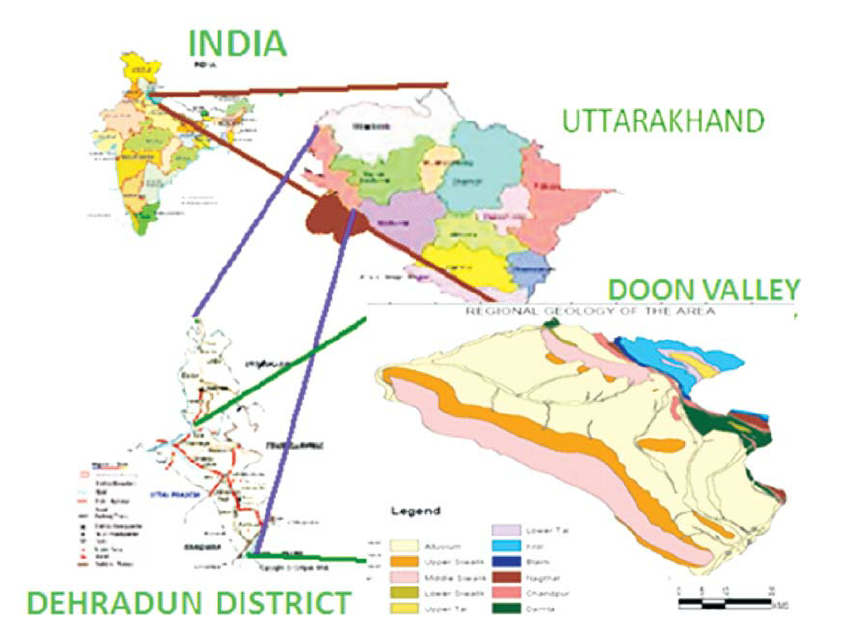The Doon Valley Notification of 1989: A Landmark in Environmental Conservation
The Doon Valley Notification of 1989 stands as a significant milestone in India’s environmental regulatory framework. Issued by the Ministry of Environment and Forests, Government of India, this notification was a response to the growing environmental degradation in the Doon Valley, a region renowned for its unique ecological and geological features. The notification aimed to control and regulate industrial activities in the area to preserve its fragile environment.
Background and Context
Doon Valley, nestled between the Himalayas and the Shivalik hills, is an ecologically sensitive area characterized by its rich biodiversity, fertile soils, and abundant water resources. The valley includes the city of Dehradun, the capital of Uttarakhand. In the decades leading up to the notification, rapid industrialization and urbanization began to take a toll on the region’s natural environment. Unregulated mining activities, deforestation, and industrial pollution were major concerns, leading to significant environmental degradation.
Key Provisions of the Doon Valley Notification
The Doon Valley Notification, issued on December 1, 1989, under the Environment (Protection) Act of 1986, introduced stringent regulations to curb further environmental damage. Key provisions included:
- Prohibition and Regulation of Industries:
- Certain categories of industries, particularly those deemed highly polluting, were prohibited from being established in the valley.
- Existing industries were required to comply with strict pollution control measures or face closure.
- Mining Restrictions:
- Mining activities, especially those involving limestone and other minerals, were heavily regulated.
- New mining leases were banned, and existing operations had to conform to environmental safeguards.
- Land Use and Construction:
- Construction activities in ecologically sensitive zones were restricted.
- Guidelines were established for land use to ensure sustainable development practices.
- Environmental Impact Assessment (EIA):
- Mandatory EIA procedures were introduced for proposed industrial projects.
- Public hearings and stakeholder consultations became integral to the approval process.
Impact and Outcomes
The implementation of the Doon Valley Notification had several significant outcomes:
- Environmental Restoration:
- The cessation of uncontrolled mining and industrial activities led to a gradual recovery of the valley’s ecosystems.
- Reforestation and soil conservation efforts improved land stability and reduced erosion.
- Improved Air and Water Quality:
- With the regulation of polluting industries, air and water quality in the region saw marked improvements.
- The rejuvenation of rivers and streams in the valley was observed over time.
- Sustainable Development:
- The notification promoted the idea of sustainable development, balancing ecological preservation with economic growth.
- It set a precedent for environmental regulations in other ecologically sensitive regions in India.
- Increased Environmental Awareness:
- The notification raised public awareness about the importance of environmental conservation.
- It empowered local communities and environmental activists to participate actively in the protection of their natural heritage.
Challenges and Criticisms
Despite its successes, the Doon Valley Notification faced several challenges:
- Enforcement Issues:
- Effective enforcement of the regulations was a persistent challenge due to administrative and logistical constraints.
- Illegal mining and industrial activities continued in some areas, undermining the notification’s objectives.
- Economic Impact:
- The stringent regulations led to the closure of several industries, impacting the local economy and employment.
- Balancing economic needs with environmental protection remained a contentious issue.
- Political and Social Dynamics:
- The notification faced resistance from industry stakeholders and political entities advocating for economic development.
- Social conflicts arose between different interest groups, complicating the implementation process.
Conclusion
The Doon Valley Notification of 1989 remains a landmark in India’s environmental regulation history. It underscored the necessity of proactive measures to protect ecologically sensitive regions from industrial and developmental pressures. While it faced implementation challenges and criticisms, its role in promoting sustainable development and environmental conservation is undeniable. The lessons learned from the Doon Valley experience continue to inform environmental policies and practices in India and beyond, highlighting the ongoing need for balanced and integrated approaches to development and conservation.
ref: https://moef.gov.in/wp-content/uploads/2021/08/doon-valley-amendment.pdf
Visit www.northernridge.earth for more information.
